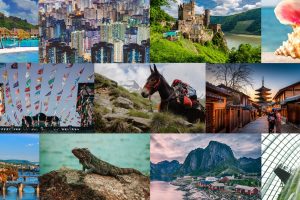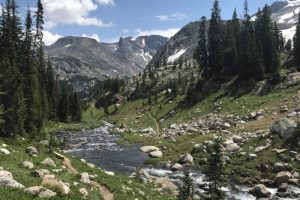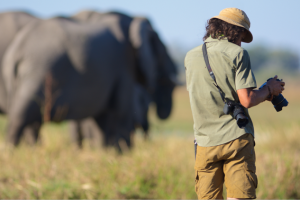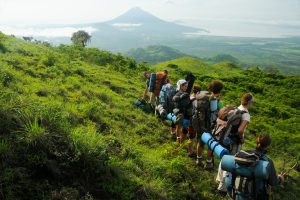Backpacking the Himalayas can be both comfortable and challenging depending on how you approach it. Some trekkers bring everything they need with them while others use guides, cooks and tent-assemblers as part of their expedition.
Dependent upon your trek, you will either begin in Kathmandu or Pokhara before embarking on a five to six hour bus journey to Kasol, an iconic spiritual mountain town.
Kathmandu
The Himalayas are more than towering mountains with snow-capped summits and cascading waterfalls; they’re home to fertile valleys, mountain meadows filled with vibrant wildflowers, and off-the-beaten villages. Their sprawling range cuts across five countries (India, Nepal, Pakistan, Tibet/China and Bhutan), dotting its mountain slopes with delicately perched monasteries.
Kathmandu is an ancient center for Hinduism and Buddhism. Home to several UNESCO-listed landmarks like Pashupatinath Temple and Boudhanath Stupa, it offers visitors plenty of experiences of its own. Autumn or late winter/early spring is usually considered the optimal time for trekking in the Himalayas due to milder temperatures and clear weather; pack warm clothing along with good hiking boots for optimal trekking conditions; a good guide can assist in planning an itinerary that ensures maximum comfort on your adventure!
Pokhara
Backpacking through Nepal can be more than just an adventure; it offers an unforgettable journey into its world of natural splendor and cultural diversity. A backpacking journey in Nepal provides the opportunity to create lasting memories while developing a deeper understanding of Himalayas’ inhabitants.
When visiting the Himalayas in autumn (late September through November), not only are the mountains at their most impressive but the weather conditions are also ideal for hiking.
Start your morning right by strolling Phewa Lake for an early lakeside walk and admire the magnificent Annapurna Range mountains. Stop at World Peace Pagoda and Tal Barahi Temple located on an island within Phewa Lake for incredible mountainscapes to explore, or rent a bike and explore Pokhara hills with your own scooter/motorbike (‘scooty’ in Nepali) ride or take part in cultural and dance shows hosted locally!
Bhagsu
Many mistakenly believe the Himalayas are only for rugged adventurers looking for thrills, but luxury lodges now provide comfortable bases from which to hike and engage in other activities. Bhagsu near McLeod Ganj has seen recent surge in popularity thanks to its proximity to Manali and scenic hikes; with affordable prices and charming atmosphere making this an ideal location to trek and camp.
Visit between March to June and September to December for the ideal climate and scenery. Practice map skills, Leave No Trace camping techniques and gain confidence as you navigate new environments with support from your team. Discover leadership qualities as you gain insights into local cultures for an unforgettable wilderness adventure experience!
Manali
Manali is a magical mountain town that provides an energizing escape from the usual tourist trail. Boasting beautiful Himalayan trails, ancient villages and rich cultural traditions – Manali offers backpackers an unforgettable backpacker experience.
Backpackers visiting Manali can experience thrilling trekking adventures such as Hampta Pass Trek, Bhrigu Lake Trek and Chanderkhani Pass Trekking. These activities allow visitors to immerse themselves in the stunning Himalayan landscape while finding spiritual wellbeing in themselves and nature.
Manali offers something for hikers of every experience level – from experienced veterans to novice beginners – no matter where your hiking journey begins. Explore its breathtaking waterfalls, serene monasteries and spellbinding valleys; or peruse its markets for exquisite handicrafts and souvenirs such as trendy woolen clothes, Pashmina shawls and handmade slippers and shoes at reasonable prices.
Tengboche
Tengboche at 3,860 meters provides the ideal location to view Everest and other peaks of Khumbu region, while experiencing Sherpa culture and lifestyle first-hand.
Visit Tengboche between March, April, May and June or in autumn (Oct and Nov). However, visiting in winter from December-Feb is also possible.
The trail to Tengboche passes through lush rhododendron forests and over suspension bridges, as well as past the Tengboche Monastery with its breathtaking panoramic view of Himalayan peaks. Trekkers can stay at teahouses or camp in designated areas; eco-lodges in Tengboche support sustainable tourism while local shops sell souvenirs and snacks in Tengboche village.





